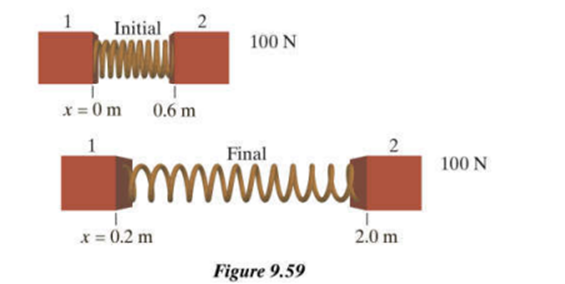Two identical 0.4 kgblock (labeled 1 and 2) are initially at rest on a nearly frictionless surface, connected by an unstretched spring, as shown in the upper portion of Figure 9.59.

Then a constant force of 100 N to the right is applied to block 2 and at a later time the blocks are in the new positions shown in the lower portion of Figure 9.59.9.59. At this final time, the system is moving to the right and also vibrating, and the spring is stretched. (a) The following questions apply to the system modeled as a point particle. (i) What is the initial location of the point particle? (ii) How far does the point particle move? (iii) How much work was done on the particle? (iv) What is the change in translational kinetic energy of this system? (b) The following questions apply to the system modeled as an extended object. (1) How much work is done on the right-hand block? (2) How much work is done on the left-hand block? (3) What is the change of the total energy of this system? (c) Combine the results of both models to answer the following questions. (1) Assuming that the object does not get hot, what is the final value of for the extended system? (2) If the spring stiffness is 50 N/m, what is the final value of the vibrational kinetic energy?



